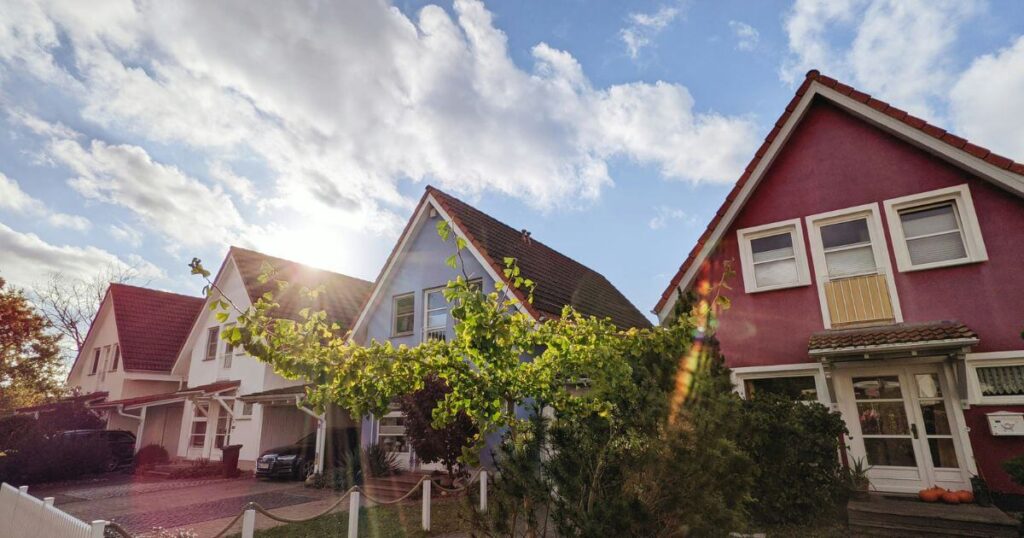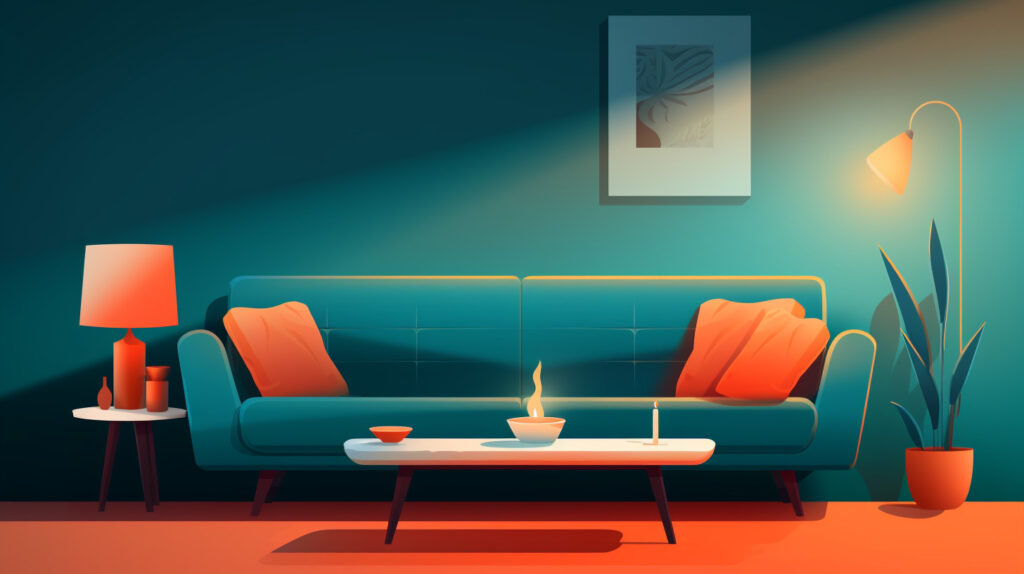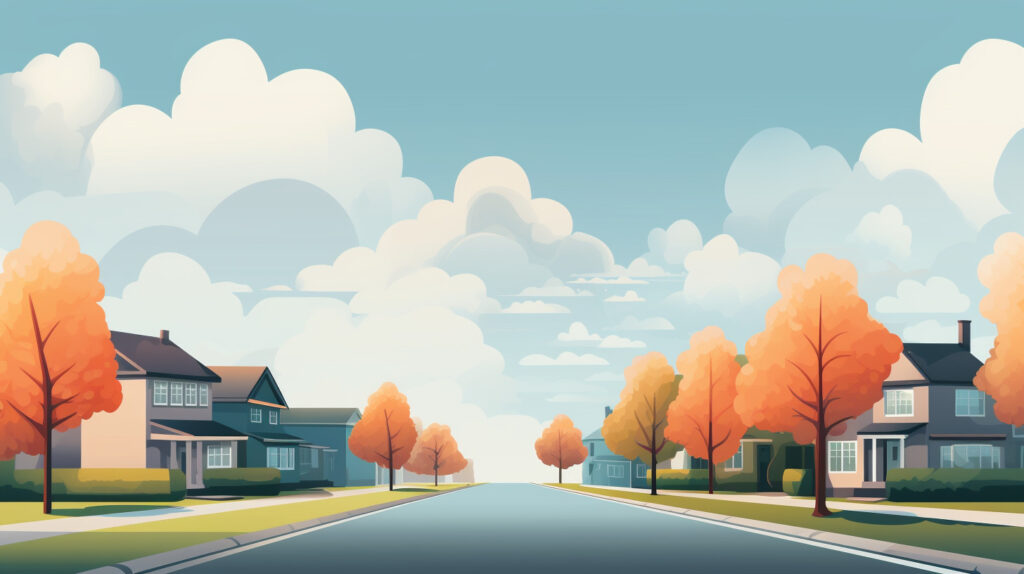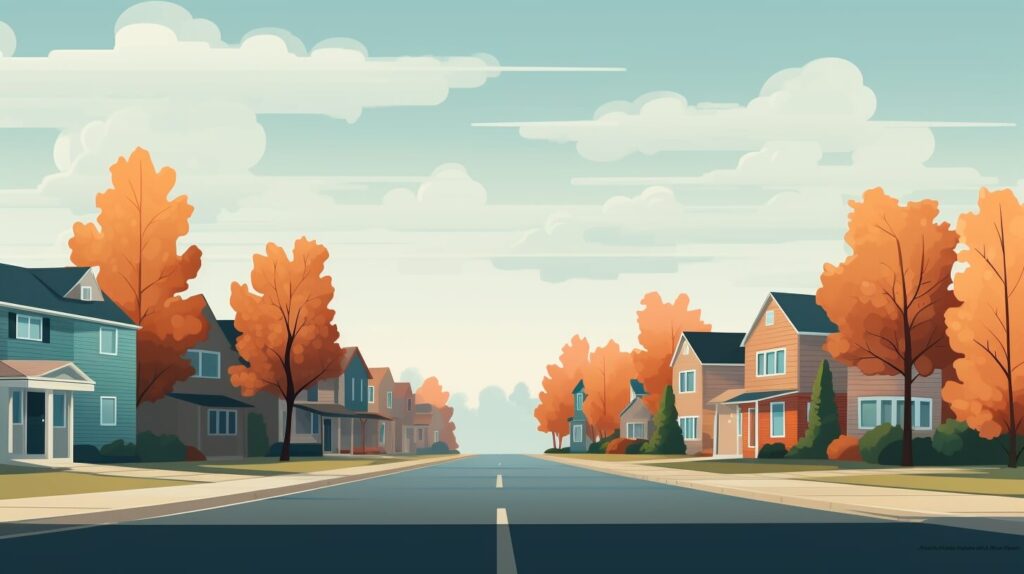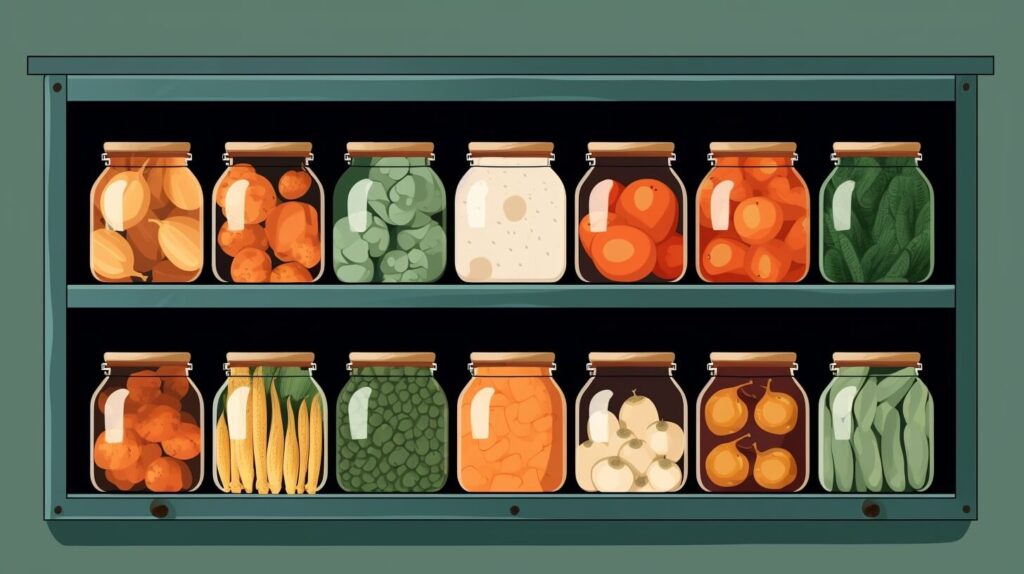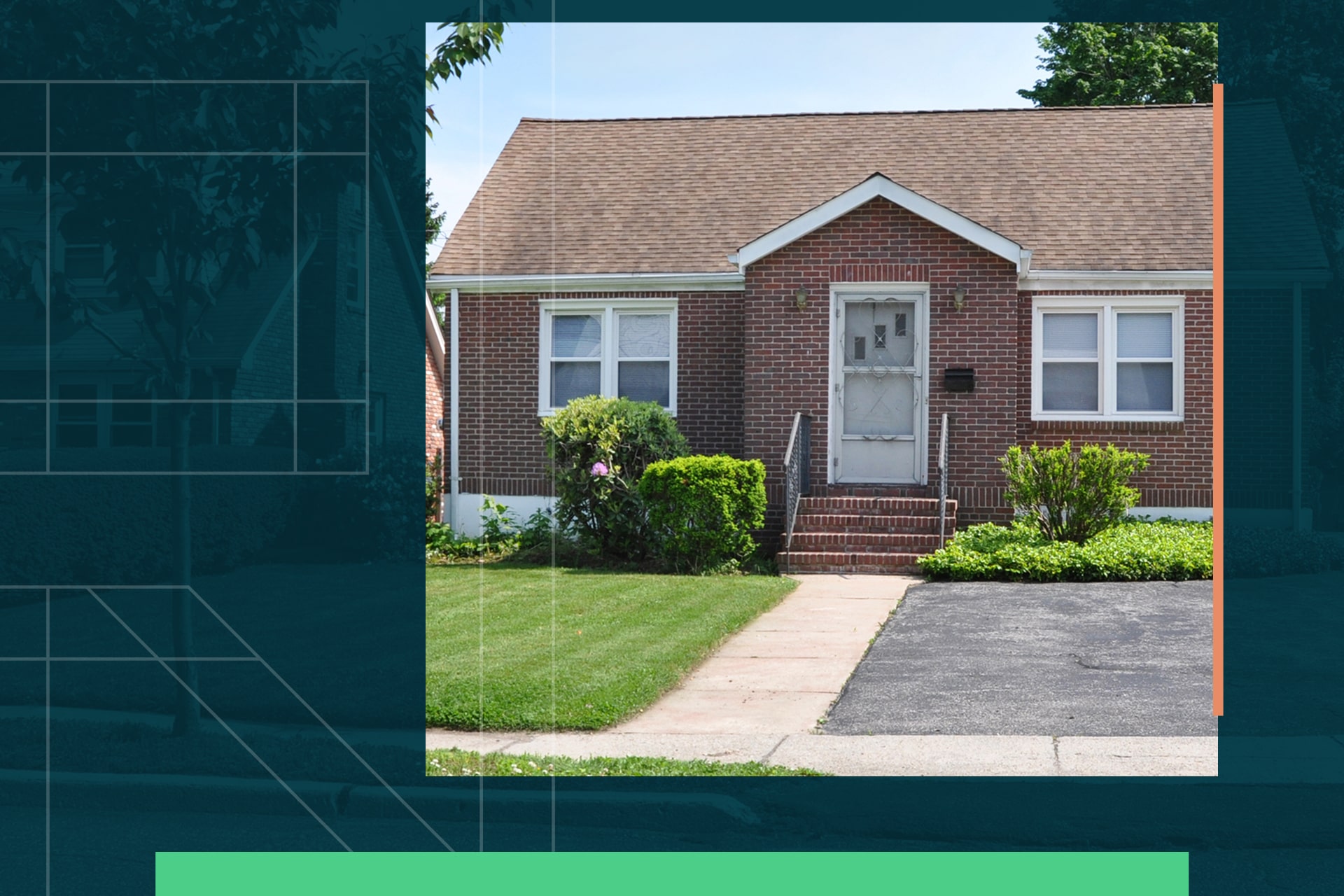
We are reader-supported. When you buy through links on our site, we may earn an affiliate commission.
A bungalow-style house is a single-story house with a low-rise roof and a veranda. If you spend a couple of hours watching any home improvement channel, you will likely see a craftsman-style house. The design remains popular because of its unique characteristics and individuality.
Some typical features include an extra half-story on a single-story home, a low roof pitch that juts over the front porch, roof overhangs and square columns.
What is a bungalow-style house? It’s a little challenging to define because the term means different things to various people and changes based on where you live in the country.
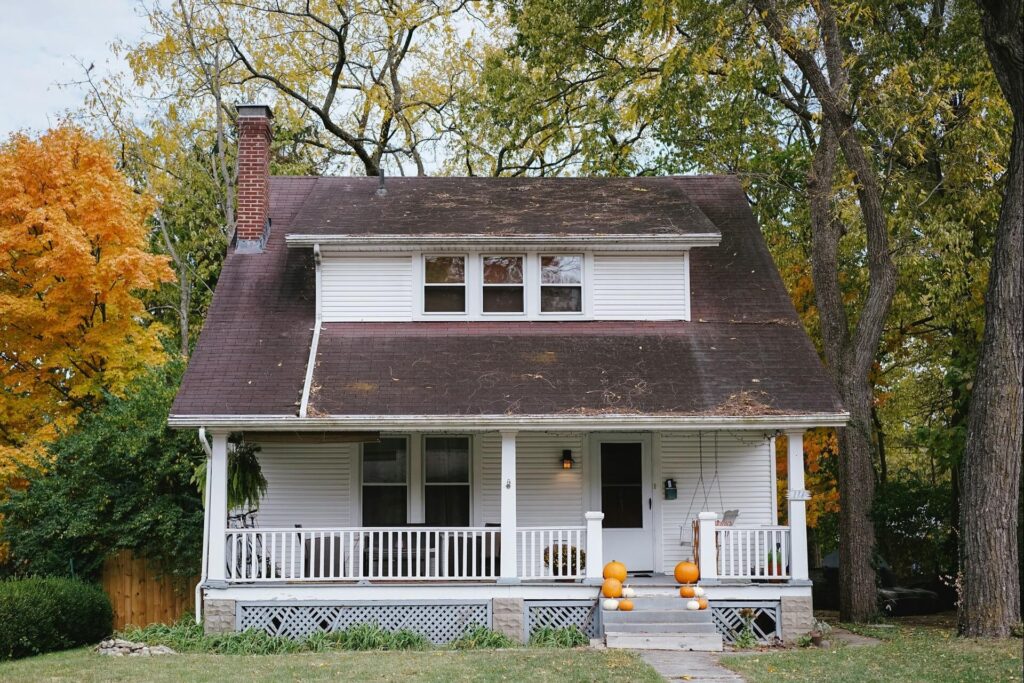
History of Bungalow Houses
Between 1880 and 1930, America enjoyed a residential growth spurt. As people moved from rural locations to industrialized cities, there was a need for small, inexpensive houses. Businesses like the Aladdin Company of Bay City, Michigan, sold bungalow kits through mail-order catalogs. Sears and Roebuck & Company sold craftsman-style plans and supplies as early as 1895.
Clapboard was the most common siding used, but some homes also feature stone, brick or cedar shingles. The interior of these compact homes offered one-and-a-half stories and a front door entering the main living area. The floor plan, lacking a formal parlor, was pretty open-plan for the time. Built-ins are a popular feature of this style for decorative touch and functionality.
Homeowners must be careful with the historic preservation of an early 20th-century bungalow or craftsman-style home as they maintain resale value better than modern homes if you keep them in the original style. For example, you should use materials that people would’ve used originally to repair columns. These columns must bear the load of the substantial porch overhang, requiring strong building materials and knowledgeable installation.
Characteristics of Bungalow Houses
Knowing the characteristics of a bungalow house allows you to know what to look for when shopping for your own turn-of-the-century gem. Here are a few characteristics that are typical of this style of house:
- Low roof: Bungalow homes have a low-rise roof that is no more than one-and-a-half stories at most.
- Overhanging roof: The craftsman home has an extended roof that covers the veranda or wrap-around porch.
- Square in appearance: Because of the materials and construction methods of the time, these homes have a square appearance that makes them feel quite box-like and compact.
- Stone or wood columns: In characteristic craftsman suburban homes, wood and stone columns support the overhanging roof space. Steel bolsters and supporting beams are inventions from later architectural developments, so a traditional bungalow home opted for a more rural appearance with wood and stone supports instead.
- Upstairs dorm windows: Earlier renovations included adding upstairs dorm windows, which created a little more space for upstairs bedrooms, though this was not initially part of these designs.
- High-set windows: Since bungalows are square homes with deep-set rooms, the window positions are high above floor level to maximize light availability.
- Basement space: Some of these homes have basement space, but this depends on the specific area, the type of soil and substructure, and whether the first owners chose to include a basement. Most included basements have a window above ground level, which adds natural light.
- Popularity: Craftsman houses remain popular, with historic societies guiding new owners on appropriate restoration methods to maintain their unique homes. The popularity of bungalow-style homes in Chicago is immense, with 80,000 historical block-shaped homes perfectly maintained thanks to their owners’ preservation efforts.
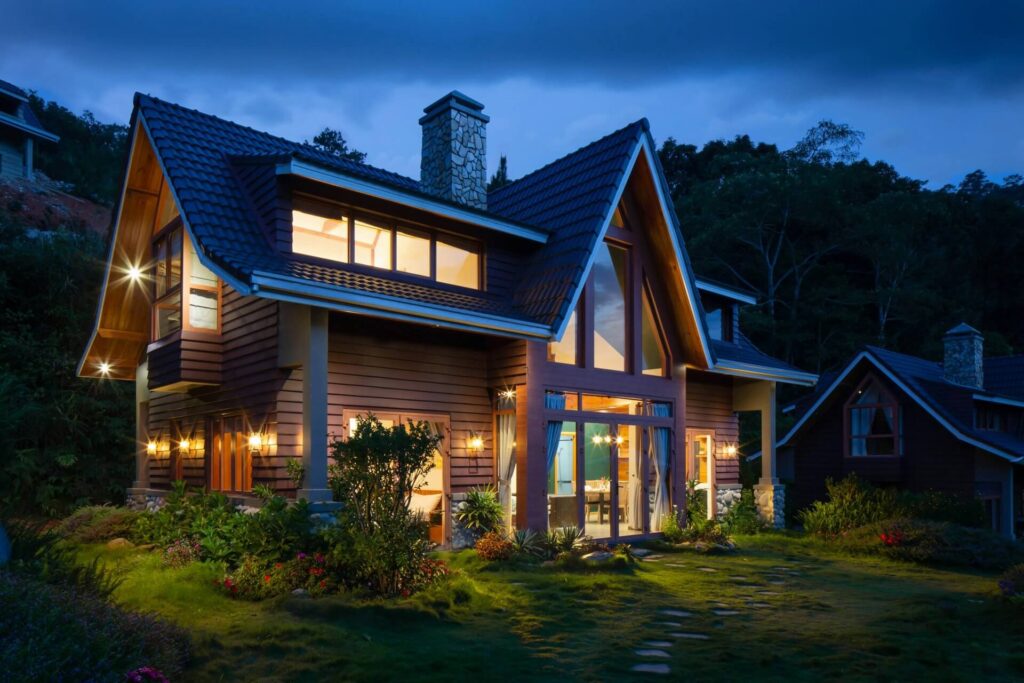
Different Types of Bungalows
You can find several variations in the bungalow style house, including:
- Classic bungalow: The classic look is the craftsman house. It has gables facing the street, a small covered porch and shingled roofing. It’s a style you’ll see from nearly any decade in the last sixty years and speaks to small-town America.
- California craftsman house: This style resembles the craftsman style, but the materials differ slightly. A California bungalow may use stucco or wood but not brick. The stucco siding may give the home a somewhat Spanish flavor, attributed to the cultural influences in California.
- Prairie-style bungalow: Frank Lloyd Wright was one of the Chicago architects behind this unique style. These houses have large piers, casement windows, and broad chimneys.
- Modern bungalow-style: This style has slight variations, such as curved corners and porthole windows. Rather than brick or wood, these homes are typically concrete and have a lot of glass.
Although slight style variations exist, these homes are recognized by their balanced appearance, low roofs, and small front columned porches.
The Popularity of Bungalow Homes
Why is the bungalow such a popular style? Part of the reason may be the nostalgia it brings. Perhaps it reminds people of visiting Grandma or driving down the streets of their hometown. The design is also very functional. Although the structures are small, the space inside offers built-in storage and open spaces conducive to family life.
Craftsman-styled homes are associated with family, and their early affordability and introduction to suburban life, when owners ordered them from catalogs, are as part of the American Dream as cotton candy.
You can find these homes nearly anywhere. By adding personal touches to the front porch area and interior, this style becomes as unique as the people who live there. Thanks to the quality craftsmanship of these homes, they are popular fix-up properties and have loads of potential for modernizing.
Top Tip: When renovating your bungalow-style home, never pay the contractor more than 20% of the labor costs as an up-front deposit so you don’t lose out as much if they’re in the wind and you need another contractor.
Pros and Cons of a Bungalow-Style House
Like any housing design, there are both pros and cons to bungalows. The pros of this style house include:
- The open floor plan.
- It’s popular and available in almost any location.
- It is a perfect choice for first-time homebuyers and retirees.
- Compact feel with affordable utility costs that reduce your carbon footprint.
- Common materials that are easily available for renovations and maintenance needs.
The cons of a craftsman-style house include:
- Wood columns tend to rot over time unless correctly maintained.
- Larger roofs are costlier to replace.
- Older properties may have problems that include plumbing challenges, which may require lifting a whole floor.
- The structure takes up more land than a two-story home, driving up the actual cost per square foot.
- Sometimes, it is priced higher per square foot due to popularity.
- Security can be a challenge as the windows are all at ground level.
- Figuring out original colors and materials can be challenging in poorly maintained properties.
- Heavy roof overhangs cover the front porches, which may require a lot of maintenance.
While craftsman homes have some drawbacks, buyers agree they have a lot of curb appeal.
What’s the Difference — Bungalow House Vs. Cottage Style
Buyers often wonder about the difference between a craftsman-style house and a cottage. A cottage is a small home in a rural area, while a bungalow is a larger square home in an urban area. A cottage in an urban area is usually located at the back of the property, as a smaller home was later added.
Cottages focus on cozy and cute appeal, while square houses are larger structures with a highly functional, family-focused design. A cottage is of British origin, while the bungalow is more from an Indian heritage. Investing in a craftsman-style home could be a fabulous opportunity to turn a tidy profit. In 40 years, the average U.S. property prices have increased by 416%, from a median price of $63,700 to $420,400. With bungalows remaining popular, the resale value stays high.
What Makes a House a Bungalow?
If you long for a simpler time when neighbors used to sit on the front porch and chatted about the weather, this style is the perfect choice for you. Based on their continued popularity, you shouldn’t have any problems finding a craftsman-style home to love.
Original Publish Date: 3/24/2024 — Updated 01/23/2025
